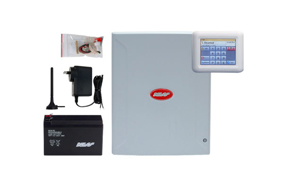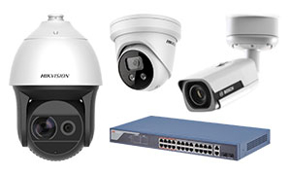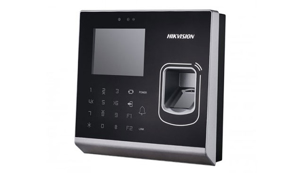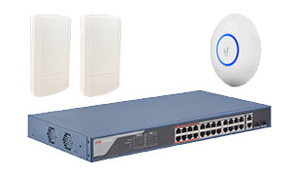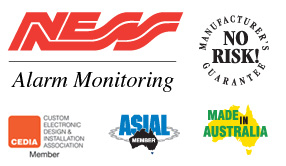Monitoring
|
| Section 1 - ALARM DEFINITIONS |
ALARM TYPE | DEFINITION | Message | Description | Priority | ACTION | NOTES |
| BURGLARY ALARM Residential Accounts | General alarm sent by the security system. Usually a PIR detector, reed switch, glass break, vibration sensor or infra-red beam. | ALM | Zone Alarm | 2 | Phone call made to the premises. Persons onsite must quote a valid voice code. If no answer is received or a voice code cannot be quoted the control room will call the keyholders in order. If no keyholders are available, the guard response procedure will be followed as per section 2. | A variation on this alarm is if a “Cancellation code” is received. This is a code sent by the alarm panel when a valid code has been entered. In these cases the premises will not be called as a valid user code has been entered. |
| BURGLARY ALARM Commercial Accounts | General alarm sent by the security system. Usually a PIR detector, reed switch, Glass break, vibration sensor or Infra-red beam. In most cases this would be an audible alarm used for the purpose of detecting a break and enter. | ALM | Zone Alarm | 2 | Phone call made to the premises. Persons onsite must quote a valid voice code. If no answer is received or a voice code cannot be quoted the control room will call the keyholders in order. If no keyholders are available, the guard response procedure will be followed as per section 2. | Supervised accounts will be phoned regardless of a cancellation being received from the site. |
| DURESS ALARM Commercial Only | Duress is a silent alarm send by a remote button or by entering a duress code into the keypad (if enabled). This is to be used in the event of a hold up or other dangerous situations. | HUA | Holdup Alarm | 1 (Commercial) | Call made directly to Police for attendance (please refer to section 2, Police Patrol Attendance). | A call is NOT made to the premises as this may escalate the danger. For this reason the location of duress button and education of the use of this feature is very important. The premises are called 20 minutes after the event as a follow up. |
| TAMPER ALARM | Tamper alarms are usually in the form of a switch located on the main alarm unit and the external siren box. These are 24 hour alarms and are there to protect the vital parts of a security system from being tampered with any time of the day. | TAM | Tamper alarm siren/panel | 2 | Premises called first, person onsite must quote a valid voice code. If no answer is received or a voice code cannot be quoted the control room will call the keyholders in order. If no keyholders are available the guard response procedure will be followed as per section 2. | |
| KEYPAD TAMPER ALARM | Keypad tamper alarms are generated when an invalid user code is entered into the alarm system on the third successive incorrect attempt. | TAM | Tamper alarm siren/panel | 2 | Premises called first, person onsite must quote a valid voice code. If no answer is received or a voice code cannot be quoted the control room will call the keyholders in order. | |
| PANIC ALARM Residential Accounts | Panic alarms are usually an audible alarm and activated by a resident pressing a remote panic button or using the keypad panic function (if enabled). | DUR | Duress alarm button / codepad / portable | 1 (Residences) | Premises called and person/s onsite will be confirmed by voice code. If no answer is received the control room must act on this as a genuine panic and treat it as a high priority alarm. Police will be called (please refer to section 2, Police patrol attendance). | If you accidentally trip the Panic Alarm it is HIGHLY RECOMMENDED that you immediately phone the control room as you may be billed for the attendance of police or a patrol. |
| SMOKE ALARM Click here to view the ASIAL guidelines for installation and maintenance for smoke sensors. | An alarm from a smoke alarm connected to the security system. Smoke alarms are set as a 24hour alarm and will sound the sirens as a local warning. | SMK | Smoke detector | 1 (commercial & residence) | Premises called first, Person onsite must quote a valid voice code. If no answer is received or a voice code cannot be quoted the control room will call the keyholders in order. | If no keyholders are available the fire brigade will be notified if an authorisation has been completed in as per section 2. |
| LATE TO CLOSE Supervised Commercial only | The security system has not been armed within the daily time frame specified by the client. | LTC | Late to close | 5 (commercial supervised only) | Premises called first. Person on site must quote a valid voice code. If no answer is received or a voice code cannot be quoted the control room will call the keyholders in order. If no keyholders are available the guard response procedure will be followed as per section 2. | A 30 minute tolerance is allowed. It is essential that you phone the control room if you will be late to close to prevent the alarm being actioned. |
| LATE TO OPEN Supervised Commercial only | The security system has not been disarmed within the daily time frame specified by the client. | LTO | Late to open | 5 (commercial supervised only) | Premises called first. Person on site must quote a valid voice code. If no answer is received or a voice code can not be quoted no further action will be taken unless a LTO is received on the previous day in which case key holders will be called and a patrol sent as per section 2 if no key holders are contactable. | A 30 minute tolerance is allowed. Late to open alarms are not actioned on weekends unless requested. |
| EARLY TO OPEN Supervised Commercial only | The security system has been disarmed outside the the daily time frame specified by the client. | EOP | Early open | 4 | Call made to Premise in “low risk” periods. Person onsite must quote a valid voice code. If no answer is received or a voice code cannot be quoted the control room will call the keyholders in order. | A 30 minute tolerance is allowed. It is essential that you phone the control room if you open out of hours to prevent the alarm being actioned. |
| AUTO-EXCLUDE Automatic zone isolation | A zone has been automatically isolated from the system. This occurs when a zone is left unsealed as the exit time expires, in most cases indicating a door or window has been left open. | BYP | Zone Isolated / Bypassed | 3 | Premises called first, Person onsite must quote a valid voice code. If no answer is received or a voice code cannot be quoted the control room will call the keyholders in order. If no keyholders are available the guard response procedure will be followed as per section 2. | Most Ness panels will give a two second siren burst to indicate that a zone/s has been Auto-excluded. |
| ZONE BYPASS Manual zone isolation Residential and non supervised commercial | A zone has been manually isolated from the system through programming via the keypad. This function is very helpful in an instance where a particular detector has been false alarming; it can be excluded until a technician is available to service the system. Please check your manual for an explanation on how to use this feature. | BYP | Zone Isolated / Bypassed | 3 | No calls made as zone has been manually bypassed. | It is recommended to have your panel set to only allow bypasses via a code if there is a possibility unauthorised people have access to the keypad. This will need to be done by your installer or by calling Ness tech support on 1300 551 991. |
| ZONE BYPASS Manual zone isolation Supervised commercial | A zone has been manually isolated from the system through programming via the keypad. This function is very helpful in an instance where a particular detector has been false alarming; it can be excluded until a technician is available to service the system. Please check your manual for an explanation on how to use this feature. | BYP | Zone Isolated / Bypassed | 3 | Premises called first, Person onsite must quote a valid voice code. If no answer is received or a voice code cannot be quoted the control room will call the keyholders in order. | It is essential that you phone the control room if the premise is expecting to be isolating or bypassing a zone. A temporary note can be placed on the account after being verified by a voice code for any given time. This will ensure no patrol will be send in the event of no keyholders being contactable. |
| MAINS FAIL | Power to the panel has been shut down. By default Ness security systems have a one-hour delay to eliminate any short mains fails reporting back to the control room. | LPT | Mains power-failure | 2 | No action taken by the control room for MAINS FAIL only. | |
| LOW BATTERY | A low battery has been reported by the security system. This may be from the main panel back-up battery or radio devices such as wireless detectors and wireless smoke alarms that are programmed into the system. | LBT | Low battery alarm | 2 | Premises called first if a recent power failure has also been received at the control room, Person onsite must quote a valid voice code. If no answer is received or a voice code cannot be quoted the control room will call the keyholders in order. If no keyholders are available the guard response procedure will be followed as per section 2. If previous mains fail has been received a call will be made to the premises and a report sent to the installer if the event occurs between the hours of 6am and 11pm. If the report is received outside of these hours a report is sent to the installer only. | Ness main panel batteries are automatically tested every hour by the panel and on every arming of the panel. |
| NO TEST REPORT | It is a requirement that the security system sends a test report back to the control room at a preset frequency. | NOT | Not test report | Auto log and emails direct to Dealers | Report sent to your installer to investigate the reason for the missed test call. | By default NESS systems send a weekly report. We encourage our clients to send test reports more often as this raises the security level of the system. We do not charge any extra for this service but you will be billed a local call cost by your phone provider for each call the panel makes back to the control room. |
| SUPERVISORY FAIL | A radio device has failed to report back a supervision signal to the security system. Supervisory signals are transmitted by radio devices to ensure the integrity of the device on a regular basis. | ALM | Supervisory Signal Fail | 2 | By default the premise is called first, Person onsite must quote a valid voice code. If no answer is received or a voice code cannot be quoted the control room will call the keyholders in order. If no keyholders are available the guard response procedure will be followed as per section 2. | |
| PSTN FAIL | PSTN fail signals are sent when a GSM/GPRS device is connected to the alarm system and the phone line to the alarm fails. | LTF | Line fail | 2 | Premises called first, Person onsite must quote a valid voice code. If no answer is received or a voice code cannot be quoted the control room will call the keyholders in order.If no keyholders are available the guard response procedure will be followed as per section 2. | |
| GSM / GPRS FAIL | GSM/GPRS fail signals are sent via the PSTN phone line when a GSM/GPRS device is connected to the alarm system and has failed to communicate. | ALM | PSTN Line Fail | 2 | Premises called first, Person onsite must quote a valid voice code. If no answer is received or a voice code cannot be quoted the control room will call the keyholders in order. If no keyholders are available the guard response procedure will be followed as per section 2. |
| Section 2 - ALARM RESPONSE |
GUARD PATROLS | What does a patrol do? | |||||
YOUR GUARD PATROL OPTIONS You can choose one of these response types for the Control Room to take in the event of alarm. If you would like to change the response option for your premises please send your request in writing to: | OPTION 1 – KEYHOLDERS TO ALL EVENTS | |||||
| POLICE ATTENDANCE | The Control Room cannot call for police attendance unless a genuine intrusion has been verified by a keyholder or patrol. | |||||
| AMBULANCE ATTENDANCE | An ambulance may be called upon request or if an alarm is received from a medical pendant connected to your security system. | |||||
| FIRE BRIGADE ATTENDANCE | The Fire Brigade may be called upon request or if an alarm is received from a smoke detector connected to your security system. You may be billed for attendance by fire services. This is your responsibility and beyond the control of Ness. | |||||
| Section 3 - VOICE CODES AND KEYHOLDERS |
HINT: Choose a Voice Code that's easy to remember but not too obvious. | VOICE CODES | |||||

